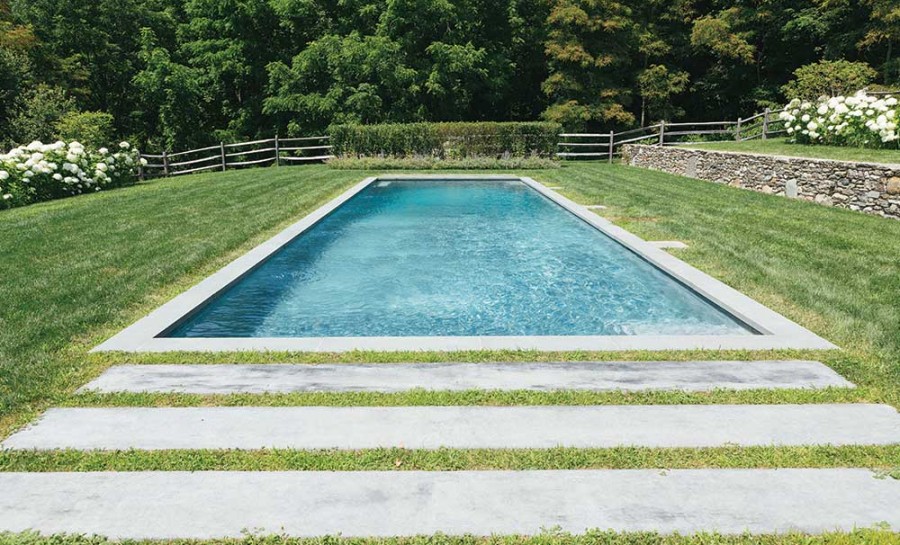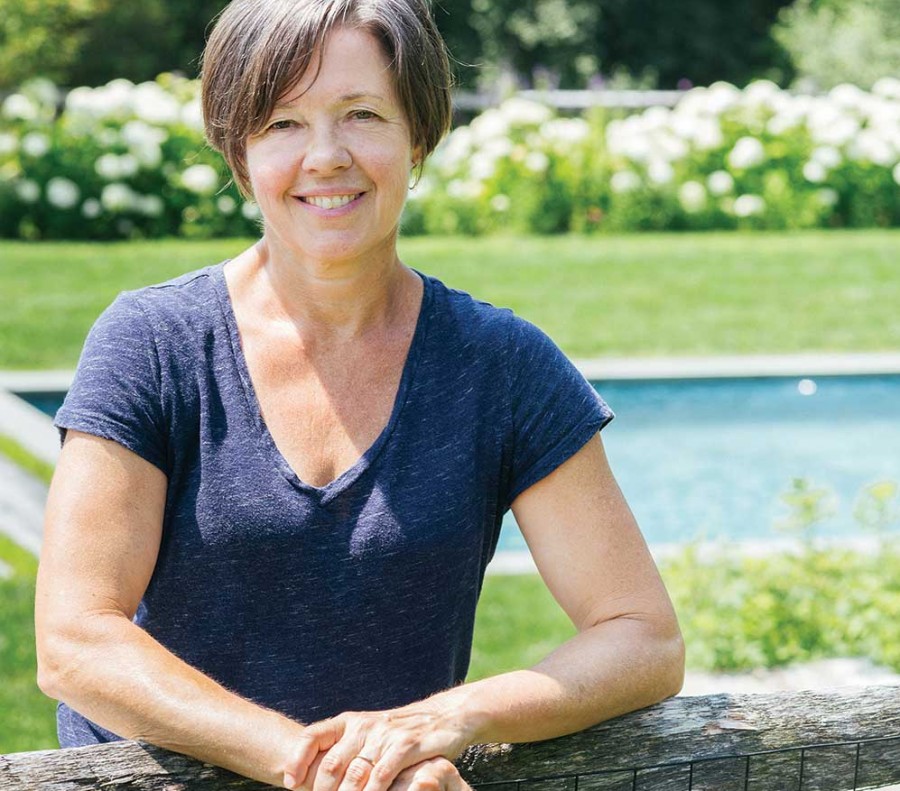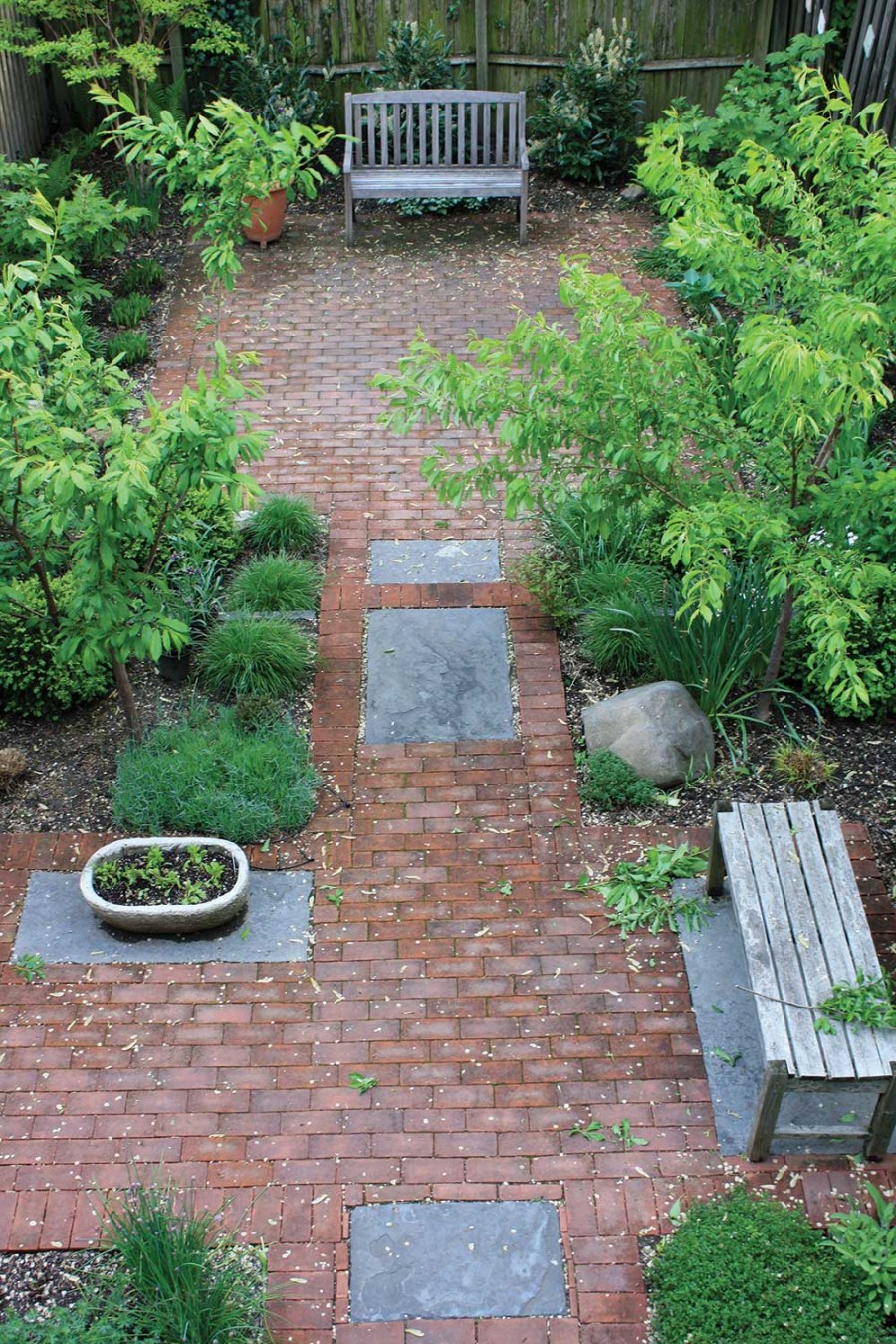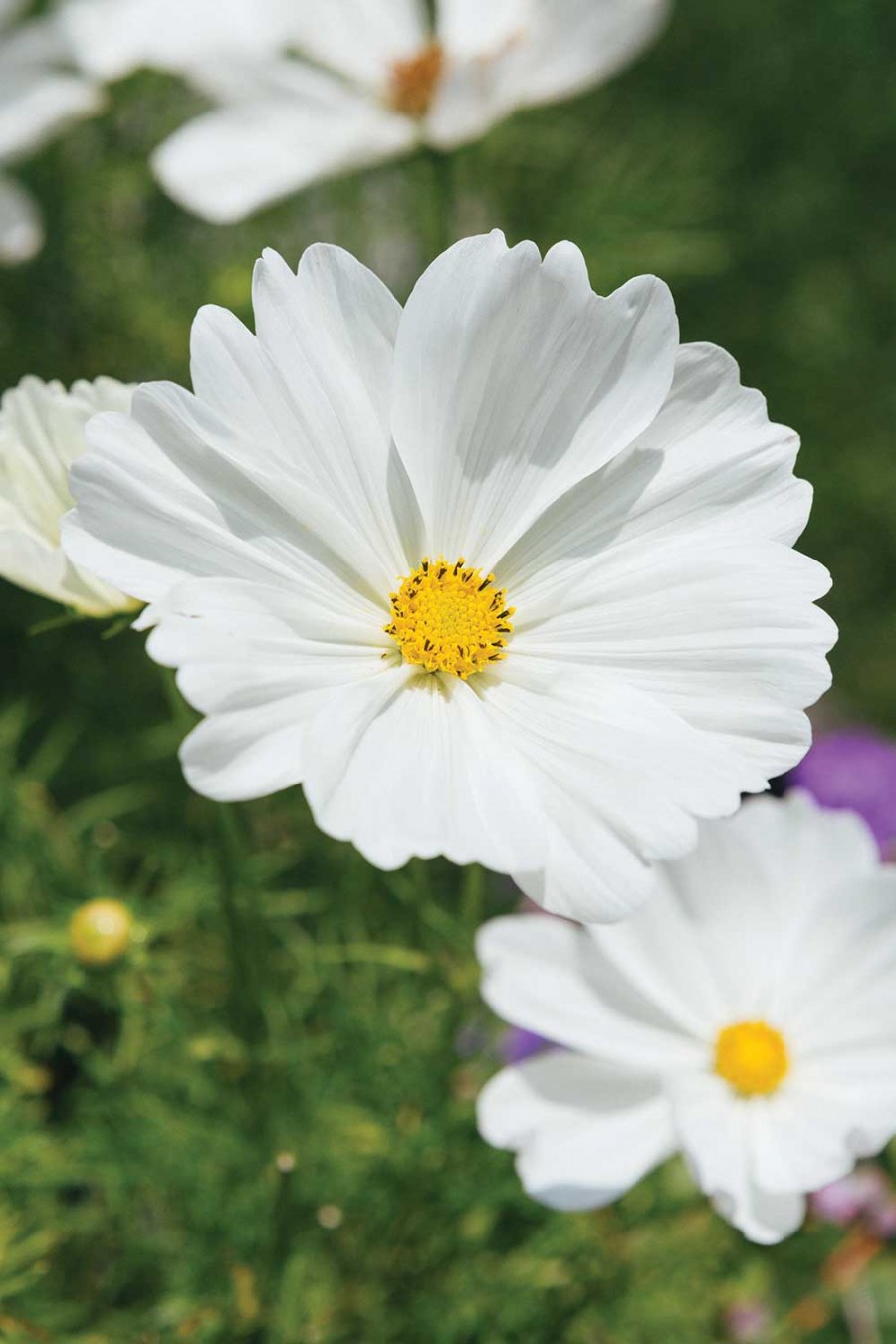Setting the Scenery
Garden Designer Hilary Finn Cultivates the Practical and the Ornate
By Anne Pyburn Craig | Photographs by Thomas Smith | Fall 2014 | Features
Hilary Finn thought she’d be a sculptor or a painter when she studied at SUNY New Paltz. Then she found her true media: not just wood and stone but water, light, flowers, and leaves. Since 2000, she has been renewing outdoor spaces as a garden designer, recently adding outdoor furniture design to her list of talents. “My jumping-off point is the architecture that I’m working with,” she says. “I like simple, direct design—utilitarian, but with a decorative element.” Finn divides her time between Brooklyn, New Paltz, and an island in Maine with no cell service, a place with what she calls “controlled wild.” We spoke with Finn about her motivation, inspirations, and methods.

How did your fascination with gardens begin?
My parents were fanatical about old houses. They’d buy beautiful, dilapidated ones they could get for a good price. I was always intrigued by the skeletal remnants of the old gardens, the old walls and pathways. When I was seven, we lived in a huge whaling captain’s house in New Bedford, Massachusetts. It had the relics of an old, formal garden. I had a secret corner behind some hedges where I first experimented with transplanting and growing. It was at that house that I developed my fondness for lily of the valley, lilacs, herringbone brick patterns, and old granite walls.
How did you come to do this professionally?
After college, I worked in visual merchandising and decorative painting and studied landscape design at the New York Botanical Garden. I started my own company 14 years ago, doing small-scale garden design. It gradually developed into larger projects.
Are you influenced by any particular garden style?
I love looking at historic gardens from everywhere, but they have to look like they belong. You might take elements and spirit from a Japanese garden, but it’s not my style to try to replicate that in the Hudson Valley or Brooklyn.

Is working in the Hudson Valley different from working in Brooklyn?
Deer! Beyond that, the main difference is the amount and shape of space. In the city, almost everything is a rectangle. And in New York we are creating privacy. In the country we are creating spaces to live within the larger landscape.
What’s the first thing you consider on a new job?
Often, owners haven’t done much in the way of connecting the land to how they live in the house: the interaction between inside and outside, the journey from where they park to the house, what they see when they look out the window, how they want to extend their living space outside. They’ll also be looking at it in winter months, which can be a gorgeous time if the garden has structure that will remain: lines, trees, evergreens, hedges, branching patterns. My ideal time to start working is in the fall. Then you can take time over the winter to contemplate and design in a logical way. The gardens at Mohonk are a wonderful example of planning for the future with what you do in the present. The plantings around their spa extension are just starting to mature and meld to the land. Beautiful.

What are some of your favorite elements to incorporate?
The challenge is to create something to find. That doesn’t have to be a high-ticket item; it could be a view, or a planting, or a place to sit, just so you go through something to this “wow” moment. It can be hard to convince people not to reveal everything from the window, but if the encore came first, why would you sit through the show?
